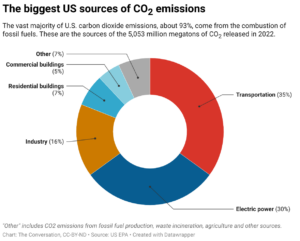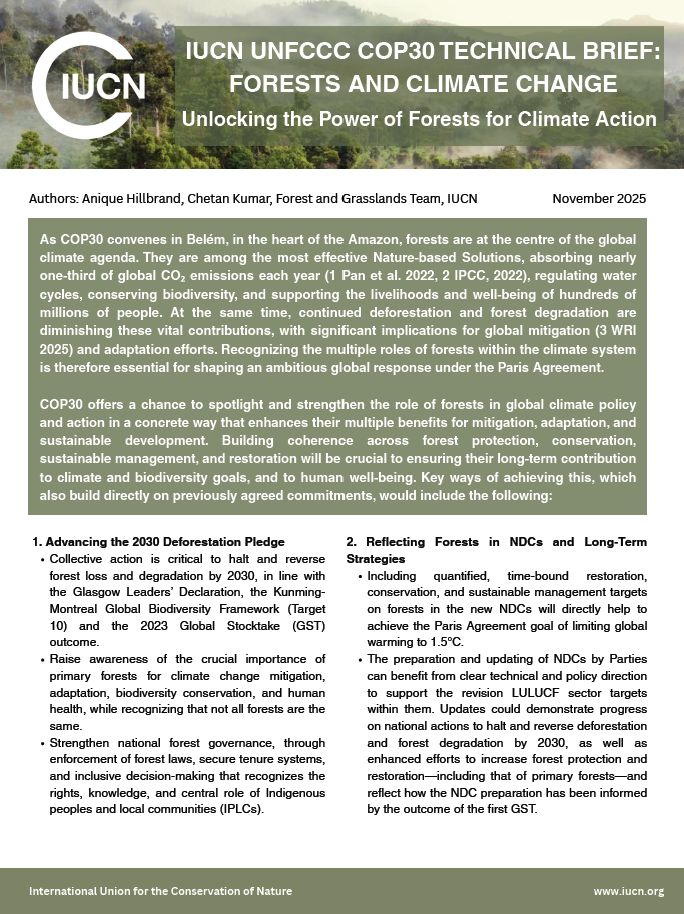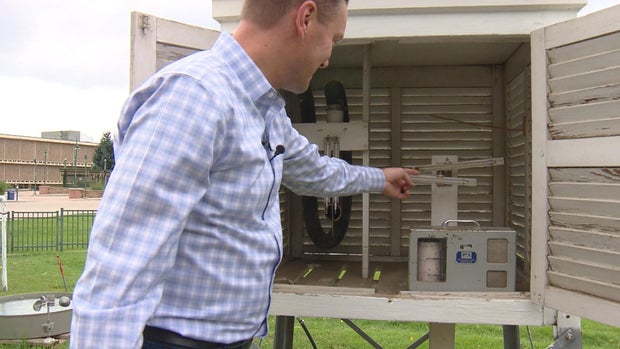How climate change amplifies inequality – Indianapolis Recorder

Report on Climate Change Impacts and Inequity in Indianapolis: An SDG Perspective
Executive Summary
Climate change is manifesting in Indianapolis through increased heat, flooding, and poor air quality. These environmental hazards disproportionately impact underserved and historically marginalized communities, creating significant barriers to achieving the Sustainable Development Goals (SDGs). This report analyzes the primary climate threats, examines the root causes of the inequitable impacts, and outlines local initiatives aimed at building resilience, all viewed through the framework of the SDGs.
1. Climate Impacts and Their Collision with Sustainable Development Goals
The escalating climate hazards in Indianapolis directly challenge the city’s progress toward several key SDGs, particularly those related to health, equality, and sustainable urban development.
1.1. Extreme Heat and Urban Heat Islands
Rising temperatures pose a direct threat to urban sustainability and public health, undermining SDG 3 (Good Health and Well-being) and SDG 11 (Sustainable Cities and Communities).
- Temperature Projections: Indiana’s average temperature is projected to rise by 5-6°F by 2050, increasing the number of days over 95°F from seven per year to as many as 51.
- Urban Heat Island Effect: Two-thirds of residents live in areas where temperatures are amplified by at least 8°F due to a lack of green space and a prevalence of heat-absorbing surfaces.
- Green Infrastructure Disparity: Historically redlined neighborhoods, often home to low-income and minority populations, exhibit tree canopy cover as low as 3%, compared to over 78% in affluent areas. This disparity in natural cooling infrastructure directly contravenes the principles of SDG 15 (Life on Land) and SDG 10 (Reduced Inequalities).
1.2. Public Health Crises and Air Quality Degradation
Climate impacts exacerbate public health vulnerabilities, creating a significant challenge for SDG 3 (Good Health and Well-being).
- Heat-Related Illnesses: Extreme heat increases the risk of heat stress and mortality, particularly for the elderly, children, and individuals with chronic conditions.
- Worsened Air Quality: Higher temperatures increase ground-level ozone, a harmful pollutant. This is especially dangerous in low-income neighborhoods situated near industrial sites and highways, compounding existing health disparities.
1.3. Increased Flooding and Infrastructure Fragility
Changes in precipitation patterns are overwhelming existing infrastructure, threatening progress on SDG 6 (Clean Water and Sanitation), SDG 7 (Affordable and Clean Energy), and SDG 11 (Sustainable Cities and Communities).
- Flood Vulnerability: Nearly 800,000 Indiana residents are vulnerable to inland flooding, with over 270,000 at direct risk.
- Intensified Rainfall: The four wettest days of the year now feature up to 35% heavier rainfall, leading to overwhelmed sewer systems and increased property damage.
- Power Outages: Climate-related events are linked to more frequent and prolonged power outages in communities of color and low-income areas, limiting access to essential services.
2. Systemic Vulnerabilities: The Root of Disproportionate Impacts
The disproportionate burden of climate change on certain communities is not accidental but is rooted in historical and systemic inequities, directly opposing the mission of SDG 10 (Reduced Inequalities).
2.1. Legacy of Inequitable Urban Planning
Historic redlining and discriminatory urban planning have concentrated non-white and low-income populations in areas with the highest environmental risks. These neighborhoods were designed with inferior infrastructure, proximity to pollution sources, and minimal green space, creating a foundation for the climate inequities seen today.
2.2. Factors Driving Socio-Economic Vulnerability
- Economic Precarity: Residents in underserved communities often face higher energy burdens and lack access to reliable air conditioning. Many are employed in outdoor occupations, increasing their exposure to extreme heat.
- Health Disparities: Higher rates of chronic diseases such as asthma and hypertension, coupled with reduced access to healthcare, amplify the health impacts of heat and pollution.
- Infrastructure Deficiencies: Historic underinvestment has left low-income neighborhoods with inadequate stormwater management systems, placing them at higher risk of flooding, property loss, and displacement.
3. Local Climate Action and Resilience Strategies
In response, Indianapolis has initiated several programs aimed at building climate resilience with a focus on equity, aligning with the objectives of SDG 11 (Sustainable Cities and Communities) and SDG 13 (Climate Action).
3.1. Strategic Initiatives
- Thrive Indianapolis: The city’s sustainability and resilience action plan, which includes 59 actions designed to enhance the built environment, public health, and natural resources with an emphasis on environmental equity.
- Targeted Green Infrastructure: City and partner organizations are prioritizing tree planting and the expansion of green spaces in historically underserved areas to mitigate urban heat, directly contributing to SDG 15 (Life on Land).
- Social Vulnerability Mapping: The Hoosier Resilience Index is used to identify census tracts with high socio-economic vulnerability, allowing for targeted resource allocation to advance SDG 10.
- Community Support Programs: Local nonprofits and city programs provide cooling centers, water stations, and utility assistance to protect high-risk residents, supporting the immediate goals of SDG 3.
4. Conclusion: The Imperative of Equity in Climate Action
Effective climate action requires a deliberate focus on equity. Climate hazards amplify existing disparities in health, wealth, and infrastructure. Without directing resources to the most vulnerable populations, adaptation efforts risk deepening these divides. Achieving true climate resilience in Indianapolis is therefore inseparable from the mission to advance SDG 10 (Reduced Inequalities), ensuring that all communities have the capacity to withstand and recover from climate shocks.
1. Which SDGs are addressed or connected to the issues highlighted in the article?
SDG 3: Good Health and Well-being
- The article extensively discusses the health impacts of climate change, such as “heat-related illnesses and deaths,” particularly among vulnerable groups like the elderly and children. It also highlights how heat worsens air quality by increasing “ground-level ozone,” leading to respiratory issues, and mentions the prevalence of chronic conditions like “asthma, diabetes and hypertension” which are exacerbated by these environmental factors.
SDG 7: Affordable and Clean Energy
- The article touches upon energy access and affordability by stating that residents in underserved communities are “less likely to have access to reliable and affordable air conditioning and face higher energy burdens.” It also mentions power outages following climate hazards and community advocacy for “equitable access to clean energy upgrades.”
SDG 10: Reduced Inequalities
- This is a central theme of the article. It repeatedly emphasizes that climate harms “disproportionately affect underserved populations, particularly in historically marginalized neighborhoods.” The text links these disparities to the “legacy of redlining,” which relegated “non-white, low-income residents” to areas with higher environmental risks. The entire analysis is framed around how climate change amplifies existing social and economic inequalities.
SDG 11: Sustainable Cities and Communities
- The article is focused on the urban environment of Indianapolis. It discusses urban planning issues like the “urban heat island effect,” lack of “tree canopy” and “minimal greenery” in certain neighborhoods, and “infrastructure fragility,” including overwhelmed sewer systems. It also highlights local solutions like the “Thrive Indianapolis” sustainability and resilience action plan, tree planting initiatives, and the creation of cooling infrastructure, all of which aim to make the city more resilient and inclusive.
SDG 13: Climate Action
- The entire article is about the local impacts of climate change and the need for adaptation. It describes rising temperatures, increased flooding, and poor air quality as direct consequences of a changing climate. It also details local efforts to build resilience, such as the “Thrive Indianapolis” plan, which aims to help the city adapt to climate shocks through “environmental equity” and “climate adaptation planning.”
2. What specific targets under those SDGs can be identified based on the article’s content?
-
SDG 3: Good Health and Well-being
- Target 3.9: By 2030, substantially reduce the number of deaths and illnesses from hazardous chemicals and air, water and soil pollution and contamination. This is relevant because the article describes how heat worsens “air quality by increasing ground-level ozone” and how residents in low-income neighborhoods suffer from “elevated levels of ozone and other pollutants.”
- Target 3.d: Strengthen the capacity of all countries… for early warning, risk reduction and management of national and global health risks. The article points to the need for this by discussing the rise in “heat-related illnesses and deaths” and mentioning community efforts for “climate-informed health outreach.”
-
SDG 7: Affordable and Clean Energy
- Target 7.1: By 2030, ensure universal access to affordable, reliable and modern energy services. This is addressed when the article notes that vulnerable residents have less access to “reliable and affordable air conditioning,” face “higher energy burdens,” and endure “longer, more frequent outages.”
-
SDG 10: Reduced Inequalities
- Target 10.2: By 2030, empower and promote the social, economic and political inclusion of all, irrespective of… race, ethnicity… or economic or other status. The article’s focus on the disproportionate impact on “Black, low-income and immigrant communities” and the legacy of “redlining” directly relates to this target of overcoming systemic exclusion.
-
SDG 11: Sustainable Cities and Communities
- Target 11.5: By 2030, significantly reduce the number of deaths and the number of people affected… caused by disasters, including water-related disasters, with a focus on protecting the poor and people in vulnerable situations. The article directly addresses this by detailing the risks of “inland flooding exacerbated by climate change” and extreme heat, noting that these hazards disproportionately harm “underserved communities.”
- Target 11.6: By 2030, reduce the adverse per capita environmental impact of cities, including by paying special attention to air quality. This is relevant to the discussion of “urban heat island effects” and poor air quality from “ground-level ozone” in specific Indianapolis neighborhoods.
- Target 11.7: By 2030, provide universal access to safe, inclusive and accessible, green and public spaces. The article connects to this by highlighting the disparity in “tree canopy,” which ranges from “as little as 3%… to over 78%,” and mentioning efforts for “targeted tree planting & park expansion” in underserved areas.
- Target 11.b: …increase the number of cities… adopting and implementing integrated policies and plans towards inclusion… mitigation and adaptation to climate change, resilience to disasters… The “Thrive Indianapolis” plan is a direct example of such an integrated policy.
-
SDG 13: Climate Action
- Target 13.1: Strengthen resilience and adaptive capacity to climate-related hazards and natural disasters. The entire article, from describing the problems (heat, flooding) to the solutions (“Thrive Indianapolis,” cooling centers, tree planting), is about building local resilience and adaptive capacity.
- Target 13.2: Integrate climate change measures into… policies, strategies and planning. The city’s “sustainability and resilience action plan,” Thrive Indianapolis, is a clear example of integrating climate change measures into local planning.
3. Are there any indicators mentioned or implied in the article that can be used to measure progress towards the identified targets?
- Temperature Data: The article provides specific metrics like the historical temperature rise (“over 2.2°F in the last century”), projected increases (“another 5-6°F by 2050”), and the urban heat island effect (“amplified by at least 8°F”). These can measure the severity of climate impacts.
- Frequency of Extreme Weather: The increase in days over 95°F, from “seven per year today to as many as 51… by midcentury,” is a clear indicator of climate change’s progression.
- Tree Canopy Coverage: The disparity in tree canopy, “from as little as 3% canopy cover… compared to over 78%,” serves as a direct indicator for progress on Target 11.7 (green spaces). Success can be measured by tracking the increase in canopy cover in underserved areas.
- Population Vulnerability to Flooding: The statistic that “nearly 800,000 Indiana residents are vulnerable to inland flooding” and “more than 270,000 in areas at direct flood risk” is a baseline indicator for Target 11.5. Reducing this number through better infrastructure would show progress.
- Air Quality Levels: The mention of “elevated levels of ozone and other pollutants” implies that monitoring these pollutants can serve as an indicator for Target 3.9 and Target 11.6.
- Rainfall Intensity: The metric of rainfall being “up to 35% heavier during the four wettest days” is an indicator of changing weather patterns and stress on infrastructure.
- Access to Cooling and Energy: While not quantified, the “longer, more frequent outages” and lack of “reliable and affordable air conditioning” are qualitative indicators for Target 7.1. Progress could be measured by tracking outage duration by neighborhood or access to cooling assistance programs.
- Implementation of Action Plans: The progress of the “Thrive Indianapolis” plan, with “59 actions, 13 completed to date,” is a direct indicator for Target 11.b and Target 13.2.
4. Table of SDGs, Targets, and Indicators
| SDGs | Targets | Indicators Identified in the Article |
|---|---|---|
| SDG 3: Good Health and Well-being | 3.9: Reduce deaths and illnesses from pollution. 3.d: Strengthen capacity for health risk management. |
– Levels of ground-level ozone and other pollutants. – Prevalence of heat-related illnesses and deaths. – Prevalence of chronic diseases like asthma. |
| SDG 7: Affordable and Clean Energy | 7.1: Ensure universal access to affordable, reliable and modern energy. | – Frequency and duration of power outages in different communities. – Access to reliable and affordable air conditioning. – Level of energy burden on low-income households. |
| SDG 10: Reduced Inequalities | 10.2: Empower and promote social, economic, and political inclusion of all. | – Disparities in exposure to environmental risks (heat, flooding, pollution) based on race and income. – Disparities in access to infrastructure (tree canopy, drainage). |
| SDG 11: Sustainable Cities and Communities | 11.5: Reduce deaths and economic losses from disasters. 11.6: Reduce the adverse per capita environmental impact of cities. 11.7: Provide universal access to green and public spaces. 11.b: Implement integrated policies for inclusion and resilience. |
– Number of people living in flood-risk areas (270,000+). – Intensity of urban heat island effect (amplified by 8°F). – Percentage of tree canopy cover in different neighborhoods (3% vs. 78%). – Number of actions completed in the Thrive Indianapolis plan (13 out of 59). |
| SDG 13: Climate Action | 13.1: Strengthen resilience and adaptive capacity. 13.2: Integrate climate change measures into policies. |
– Rise in average annual temperature (2.2°F historically, 5-6°F projected). – Increase in number of extreme heat days (from 7 to 51 per year). – Increase in rainfall intensity (up to 35% heavier). – Implementation of city-level climate adaptation plans. |
Source: indianapolisrecorder.com

What is Your Reaction?
 Like
0
Like
0
 Dislike
0
Dislike
0
 Love
0
Love
0
 Funny
0
Funny
0
 Angry
0
Angry
0
 Sad
0
Sad
0
 Wow
0
Wow
0













































































